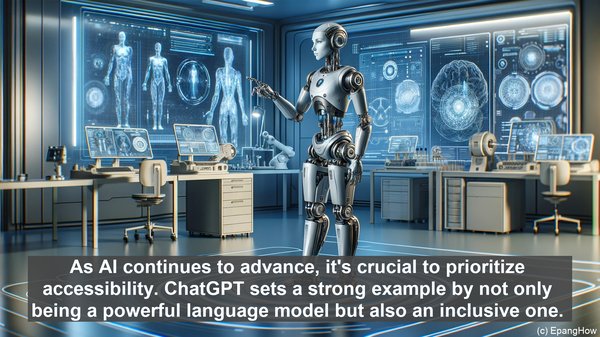Introduction: The Power of ChatGPT
In today’s article, we’ll be exploring the fascinating world of ChatGPT and its commitment to accessibility. As an advanced language model, ChatGPT has the potential to revolutionize various domains, from customer service to content creation. However, to truly harness its power, it’s crucial to ensure that it’s accessible to everyone, regardless of their abilities or requirements.
Understanding Diverse Needs
When it comes to accessibility, it’s essential to consider the wide range of needs individuals may have. Some users might rely on screen readers, while others may require simplified language or visual aids. By understanding these diverse needs, developers can create a more inclusive experience for all users.
Features Tailored for Accessibility
ChatGPT incorporates several features that enhance its accessibility. For instance, it supports alternative text descriptions for images, making it easier for visually impaired users to understand the context. Additionally, it’s designed to generate concise and coherent responses, which can be particularly helpful for users who prefer shorter interactions.

The Importance of Customization
Recognizing that different users have different requirements, ChatGPT allows for customization. This means that developers can fine-tune the model to suit specific needs, such as generating content in a particular style or adhering to specific guidelines. This flexibility ensures that ChatGPT can be a versatile tool in various scenarios.
Collaboration with the Community
To continuously improve accessibility, OpenAI actively collaborates with the community. By seeking feedback and insights from users, they can identify areas for enhancement and work towards making ChatGPT even more inclusive. This collaborative approach ensures that the tool evolves to meet the changing needs of its users.

